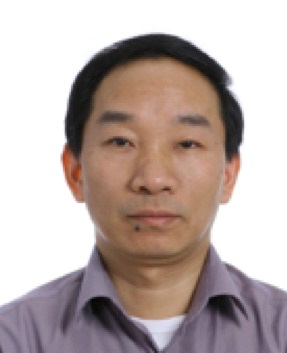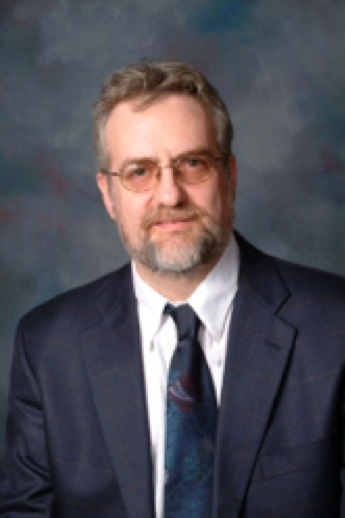Org. Synth. 2017, 94, 153-166
DOI: 10.15227/orgsyn.094.0153
Buta-2,3-dien-1-ol
Submitted by Hongwen Luo,
1a Dengke Ma,
1b and Shengming Ma
1*b,
1c
Checked by Carl A. Busacca and Chris Senanayake
1. Procedure
Buta-2,3-dien-1-ol. A 2-L oven-dried, four-necked, round-bottomed flask is equipped with a mechanical stirrer, a 30-cm reflux condenser (open to the air), two septa, and a thermocouple (
Note 1), and the flask is placed in a heating mantle. To this flask are added
CuI (38.1 g, 0.20 mol, 0.5 equiv),
paraformaldehyde (20.5 g, 0.64 mol, 1.6 equiv), and
THF (800 mL), and stirring with the mechanical stirrer is initiated.
Diisopropylamine (56.7 g, 78.5 mL, 0.56 mol, 1.4 equiv) is added in one portion by graduated cylinder, followed by the addition of
propargyl alcohol (22.5 g, 23.4 mL, 0.40 mol, 1.0 equiv) by syringe (Notes
2,
3 and
4). The mixture turns from a greenish suspension to a yellow suspension when the
propargyl alcohol is added. The mixture initially became thicker, and a rapid exotherm from 21 °C to 27 °C is observed, and an orange suspension is present (Figure 1).
Figure 1. Appearance of Reaction at the Initiation of Reflux
After the addition of the
propargyl alcohol, the resulting mixture is heated to reflux (66 °C) for 24 h in a heating mantle without protection with an inert atmosphere (Notes
5 and
6) (Figures 1 and 2). After being allowed to cool to room temperature, the dark-brown solution is transferred to a 3-L flask and the solution is concentrated under reduced pressure with a rotary evaporator (water bath: 20 °C/75 mmHg) (
Note 7).
Figure 2. Reaction after 24 h under Reflux
The original 2-L flask is equipped with a mechanical stirrer and thermocouple, charged with a cold solution (2 °C) of
diethyl ether (500 mL) and 12 N
HCl (50 mL), and agitation is started. The stirring solution is cooled to ca. -10 °C in a salt/ice bath, at which time the concentrated solution, which has a mass of ca. 185 g, is slowly and cautiously poured into the cold acidic mixture in five portions approximately 3 minutes apart (
Note 8). The immediate formation of a thick, dark brown, oily precipitate and an exotherm to a maximum of 4.0 °C are observed. Agitation is stopped and the mixture is allowed to settle for 5 min. The supernatant yellow solution is carefully decanted onto a short column of silica gel (50 g) in a 150-mL medium-fritted filter funnel positioned above a 1-L filtration flask (Notes
9 and
10). A vacuum is applied briefly to move the solution through the silica gel (Figure 3).
Figure 3. Yellow Solution after Initial Filtration
To the reddish-brown residue in the 2-L flask is added
diethyl ether (100 mL), mechanical stirring is used for 3 min, and the solution is allowed to settle for 3 min. The supernatant liquid is carefully decanted onto the same short silica gel column and filtered through the silica gel pad by briefly applying vacuum. The ether extraction (100 mL), settling, decantation and filtration process is repeated twice more (Figure 4).
Figure 4. Silica Gel Pad after all Filtrations
The clear, light yellow filtrate (~ 850 mL) is transferred to a 1-L separatory funnel and washed with saturated NaCl (2 x 100 mL). The aq. phases are combined and then back-extracted with diethyl ether (2 x 100 mL). All organic phases are combined, dried with anhydrous sodium sulfate (40 g), and filtered into 2-L flask with a 45/50 center joint. The solution is concentrated using a rotary evaporator (20 °C/65 mmHg), which facilitated the removal of ca. 820 mL of clear, colorless distillate. The residual yellow solution is transferred to a 250 mL flask, using ~ 50 mL MTBE to quantitatively transfer the mixture, and further concentrated in vacuo (20 °C/65 mmHg) to provide 23.5 g of a crude yellow oil (Note 11).
A short path distillation head is attached and the 10 mL receiving flask is chilled to -78 °C. The flask is immersed in an oil bath, and distillation is initiated at 25 °C (65 mmHg). A forerun of 2.0 mL is collected at 45 °C, at which point the distillation temperature dropped and distillation of the forerun stopped. A 25 mL receiver flask is then installed and chilled to -78 °C, and the distillation re-started. With the pot temperature at 65 °C, the main fraction (12.5 g, 45%, 98% purity) is collected (55 °C/30-33 mmHg) as a colorless oil (Note 12).
2. Notes
1. All glassware were thoroughly washed and dried in oven.
2.
CuI (≥99.5%),
paraformaldehyde (≥94.0%),
diisopropylamine (≥99.0%),
THF (≥99.0%), and
diethyl ether (≥98.5%) were purchased from Sinopharm Chemical Reagent Co., Ltd (Shanghai, China) and used as received.
Propargyl alcohol (≥99%) was purchased from AstaTech Pharmaceutical Co., Ltd. (Chengdu, China) and distilled before use.
3. The ratio of starting materials has been studied. The use of 1.6 equiv of
paraformaldehyde and 1.4 equiv of
diisopropylamine is optimal. See ref. 28 and 29.
4. The mixture will turn sticky after the addition of
propargyl alcohol, it needs a rapid stirring to avoid congelation of reaction system.
5. The orange reaction mixture turned reddish-brown slowly during the reaction.
6. The reaction was monitored by GC, which revealed complete consumption of propagyl alcohol in 24 h. A reaction mixture aliquot was withdrawn and filtered through a 0.45 micron syringe tip filter into a GC vial, then diluted with
THF and injected. Gas Chromatography conditions: Column: DB-1701, 30 m x 250 um, film 0.15 um; Flow rate 1.2-mL/min; Injector temperature 240 °C; Oven Temp: 50 °C to 150 °C at 15 °C/min; 150 °C to 280 °C at 20 °C/min, hold at 280 °C for 2 min. FID Detector Temp: 280 °C; Retention times:
propargyl alcohol = 2.18 min,
Buta-2,3-dien-1-ol = 2.55 min.
7. Significant foaming is observed at the beginning of the distillation, although the foaming is confined to the 3 L flask. Approximately 720 mL of liquid is removed by distillation.
8. White smoke was observed inside the flask during the addition of the concentrated solution. The work-up should be conducted in the fume hood.
9. Silica gel: 10-40 μm. The column: h = 3.0 cm, ø = 6.5 cm
10. The reddish brown residue has a pungent smell, and the residue can easily clog the filter funnel; therefore, care should be taken to decant only the liquid and leave the residue in the flask.
11. Analysis of the crude liquid by
1H NMR
pdf indicated the presence of the desired product,
THF, and MTBE.
12. A second run on the same scale provided 12.8 g (46%) of the identical product. The spectral properties of
buta-2,3-dien-1-ol are as follows :
1H NMR
pdf(500 MHz, CDCl
3) δ: 1.60 (brs, 1 H, OH), 4.15 (dt,
J = 6.1, 3.0 Hz, 2 H), 4.85 (dt,
J = 6.5, 3.0 Hz, 2 H), 5.35 (quint,
J = 6.4 Hz, 1 H), dilute and concentrated samples of the pure, distilled material showed slightly different proton resonances;
13C NMR
pdf(125 MHz, CDCl
3) δ: 60.0, 76.7, 90.6, 207.8; MS (EI)
m/z 70 (M
+, 18.11), 55 (100); IR (neat):
v 3333, 1956, 1046, 1010 cm
-1.
Buta-2,3-dien-1-ol (98% purity by 500 MHz
1H NMR analysis using
dimethyl fumarate as the internal standard) was colorless right after distillation, but slowly took on a light yellow color. The product should be stored below -30 °C.
Working with Hazardous Chemicals
The procedures in
Organic Syntheses are intended for use only by persons with proper training in experimental organic chemistry. All hazardous materials should be handled using the standard procedures for work with chemicals described in references such as "Prudent Practices in the Laboratory" (The National Academies Press, Washington, D.C., 2011; the full text can be accessed free of charge at
http://www.nap.edu/catalog.php?record_id=12654). All chemical waste should be disposed of in accordance with local regulations. For general guidelines for the management of chemical waste, see Chapter 8 of Prudent Practices.
In some articles in Organic Syntheses, chemical-specific hazards are highlighted in red "Caution Notes" within a procedure. It is important to recognize that the absence of a caution note does not imply that no significant hazards are associated with the chemicals involved in that procedure. Prior to performing a reaction, a thorough risk assessment should be carried out that includes a review of the potential hazards associated with each chemical and experimental operation on the scale that is planned for the procedure. Guidelines for carrying out a risk assessment and for analyzing the hazards associated with chemicals can be found in Chapter 4 of Prudent Practices.
The procedures described in Organic Syntheses are provided as published and are conducted at one's own risk. Organic Syntheses, Inc., its Editors, and its Board of Directors do not warrant or guarantee the safety of individuals using these procedures and hereby disclaim any liability for any injuries or damages claimed to have resulted from or related in any way to the procedures herein.
3. Discussion
Buta-2,3-dien-1-ol is the most simple allenol. A highly useful reagent
2,3,4,5,6,7,8,9,10,11,12,13,14,15,16,17,18,19,20,21, due to the presence of the allene and hydroxyl functionality, this molecule can participate in many types of reactions and act as a very versatile intermediate in organic synthesis (Figure 5).
22
Several methods for synthesizing
buta-2,3-dien-1-ol are listed in Figure 6. It should be noted that multi-step manipulations are needed to synthesize this compound from readily available materials, and all the methods require the use of LiAlH
4 or MeLi as the reducing reagent in the last step. The use of pyridine, benzene, LiAlH
4 or MeLi on a large scale can be harmful and dangerous. Furthermore, the intermediate 4-chlorobut-2-yn-1-ol in Figure 6 is highly explosive and a severe skin irritant. Thus, a facile and safe procedure suitable for large-scale synthesis of
buta-2,3-dien-1-ol is highly desirable.
25A synthesis of terminal allenes from terminal alkynes,
paraformaldehyde, CuBr, and
diisopropylamine in dioxane was developed,
26 which was later modified by the use of
CuI and Cy
2NH instead of CuBr and
diisopropylamine to afford the allene products with substantially improved yields.
27 However, neither procedure is practical for the large scale synthesis of
buta-2,3-dien-1-ol due to the workup and separation problem. Recently, after extensive screening, we developed a practical large-scale procedure for the synthesis of terminal allenes with
THF as the optimal solvent.
28 Based on this observation, a procedure was established for the practical synthesis of
buta-2,3-dien-1-ol on a 0.4 mol scale: under refluxing conditions, 0.4 mol of
propargyl alcohol proceeds smoothly to afford 38-45% yield of the product in the presence of 0.5 equiv of
CuI.
Figure 5. Selected Examples of the Applications of Buta-2,3-dien-1-ol
Figure 6. Reported Methods for the Synthesis of Buta-2,3-dien-1-ol
Appendix
Chemical Abstracts Nomenclature (Registry Number)
Copper iodide (CuI); (7681-65-4)
Paraformaldehyde; (30525-89-4)
2-Propanamine, N-(1-methylethyl)-; (108-18-9)
2-Propyn-1-ol; (107-19-7)
2,3-Butadien-1-ol; (18913-31-0)

|
Prof. Shengming Ma was born in 1965 in Zhejiang, China. He graduated from Hangzhou University (1986) and received his Ph.D. degree from Shanghai Institute of Organic Chemistry (1990). He became an assistant professor in 1991 at SIOC. After his postdoctoral appointments at ETH with Prof. Venanzi and Purdue University with Prof. Negishi from 1992-1997, he joined the faculty of SIOC in 1997. From February 2003 to September 2007, he was jointly appointed by SIOC and Zhejiang University. From September 2007 to September 2014, he was a professor at ECNU and SIOC and Adjunct Professor at Zhejiang University. Currently he is a professor at Fudan University and SIOC and Adjunct Professor at Zhejiang University. |

|
Hongwen Luo was born in Hunan, China, in 1989. He received his B.S. degree from University of Science and Technology of China (USTC) in 2011. He is currently pursuing his Ph. D. degree in the research group of Professor Ma. |

|
Dengke Ma was born in Henan, China, in 1988. He received his B. S. degree from Zhengzhou University in 2012. He is currently pursuing his Ph. D. degree in the research group of Professor Ma. |

|
Dr. Carl Busacca received his B. S. in Chemistry from North Carolina State University, and did undergraduate research in Raman spectroscopy and 60Co radiolyses. After three years with Union Carbide, he moved to the labs of A. I. Meyers at Colorado State University, earning his Ph. D. in 1989 studying asymmetric cycloadditions. He worked first for Sterling Winthrop before joining Boehringer-Ingelheim in 1994. He has worked extensively with anti-virals, and done research in organopalladium chemistry, ligand design, organophosphorus chemistry, asymmetric catalysis, NMR spectroscopy, and the design of efficient chemical processes. He is deeply interested in the nucleosynthesis of transition metals in supernovae. |
Copyright © 1921-, Organic Syntheses, Inc. All Rights Reserved